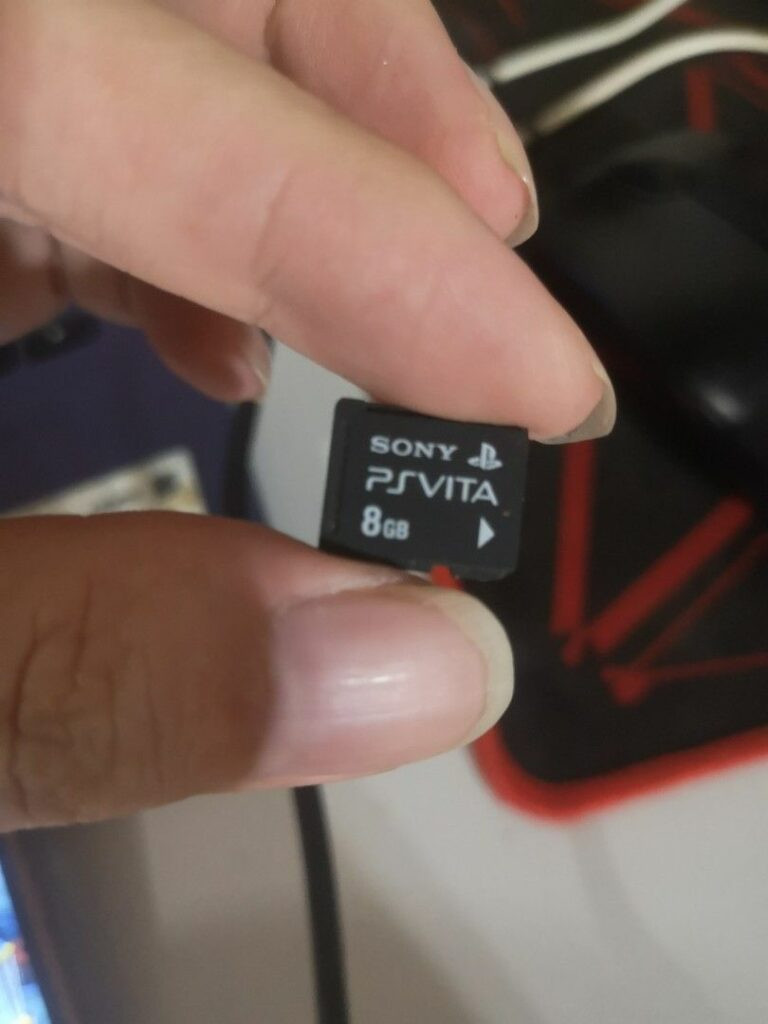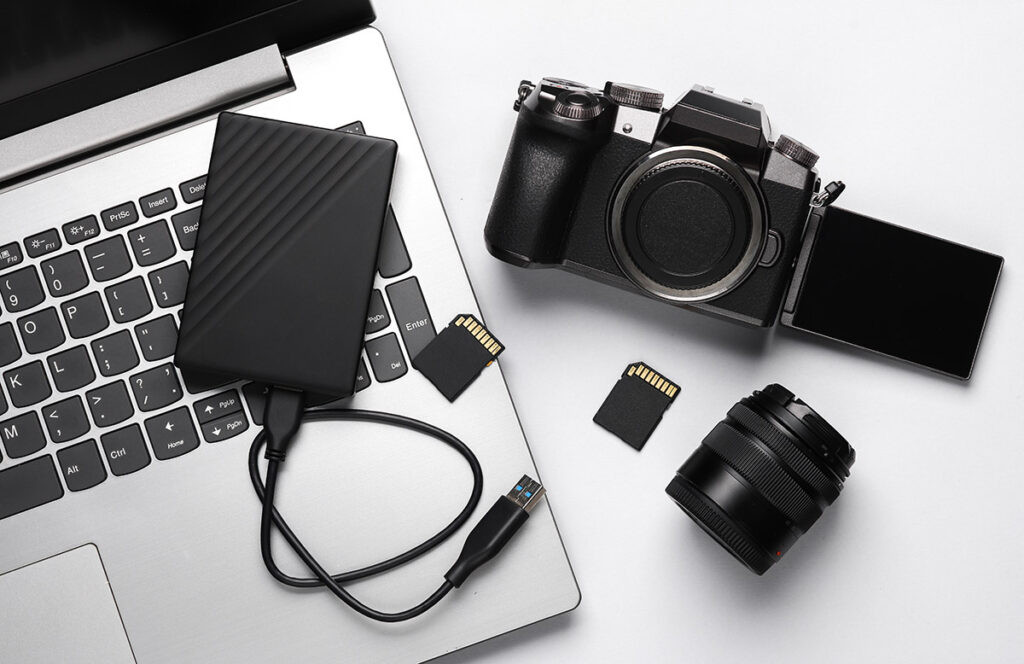Understanding how many photos an 8GB memory card can hold is crucial for photographers who want to maximize their storage. At dfphoto.net, we break down the key factors influencing storage capacity, offering practical advice for amateur and professional photographers alike, ensuring you get the most out of your digital photography. Dive in to explore file formats, resolutions, and optimization techniques that empower your photography journey, covering everything from image resolution to image compression, file management and photographic gear.
1. Decoding the 8GB Memory Card: How Many Photos Can It Store?
An 8GB memory card’s photo storage capacity varies based on several key factors, but generally, you can expect to store a significant number of images. Typically, an 8GB card can hold around 2,288 JPEG images at a 10MP resolution or approximately 220 RAW images. Understanding the nuances of image resolution and file formats will help you optimize your storage.
1.1. JPEG Format: Balancing Quality and Quantity
JPEG, a commonly used format, compresses photos to make them easier to share, sometimes at the expense of quality. With a 10-megapixel camera, a JPEG photo typically takes up around 3MB of space.
 JPEG Image on an 8GB Memory Card
JPEG Image on an 8GB Memory Card
This means an 8GB card can store approximately 2,288 JPEG photos. However, if you’re using a higher resolution camera, such as a 22-megapixel model, each image will take up more space, reducing the number of photos you can store.
Here’s a table illustrating how megapixels affect the number of storable photos:
| Megapixels | Size (MB) | Number of Photos |
|---|---|---|
| 4MP | 1.2 | 5,722 |
| 5MP | 1.5 | 4,577 |
| 6MP | 1.8 | 3,814 |
| 7MP | 2.1 | 3,269 |
| 8MP | 2.4 | 2,861 |
| 10MP | 3.0 | 2,288 |
| 12MP | 3.6 | 1,907 |
| 14MP | 4.2 | 1,634 |
| 16MP | 4.8 | 1,430 |
| 22MP | 6.6 | 1,040 |
1.2. RAW Files: Capturing Every Detail
RAW files capture all the data from your camera’s sensor without compression, offering maximum flexibility for editing. On a 10-megapixel camera with an average RAW file size of 30MB, an 8GB memory card can store around 222 RAW images. With a higher resolution camera, like 22 megapixels, the card will hold approximately 100 RAW images due to the larger file sizes.
The following table shows how the number of RAW photos changes with different megapixel settings:
| Megapixels | File size (MB) | Number of Photos |
|---|---|---|
| 4MP | 12.0 | 572 |
| 5MP | 15.0 | 457 |
| 6MP | 18.0 | 381 |
| 7MP | 21.0 | 326 |
| 8MP | 24.0 | 286 |
| 10MP | 30.0 | 228 |
| 12MP | 36.0 | 190 |
| 14MP | 42.0 | 163 |
| 16MP | 48.0 | 143 |
| 22MP | 66.0 | 104 |
2. Mastering Memory Card Math: Calculating Your Photo Capacity
To accurately determine how many photos an 8GB memory card can hold, there are practical methods you can use directly on your camera or with a computer. These steps will help you manage your storage effectively and avoid running out of space unexpectedly.
2.1. Utilizing Your Camera’s Display for Real-Time Estimates
One of the easiest ways to check photo capacity is directly through your camera. Most cameras have a built-in counter that shows the number of remaining images on the card.
- Initial Check: Insert the new 8GB card and observe the display to see the initial estimate of how many photos it can store.
- Adjust Camera Settings: Experiment with different resolution and file format settings (RAW, JPEG, Small, Large) in your camera menu to see how they affect the displayed quantity of pictures.
2.2. Reviewing Existing Photos for Accurate Predictions
If the card already has some photos stored on it, you can still get a good estimate.
- Access Image Review: Tap the Play button to view the last image taken.
- Interpret the Display: The display should indicate the image’s number, for example, “89/300,” meaning you are viewing the 89th picture and have 211 photos left on the card.
2.3. Advanced Calculation: Using Your Computer for Precision
For more precise calculations, using a computer can provide a deeper understanding of your memory card’s usage.
- Connect to Computer: Due to formatting, an 8GB memory card does not offer the full 8GB of usable space. Sync the card with your computer using a compatible reader and check its details to see the available storage space.
- Capture Test Photos: Take several test images of varying subjects, including some in RAW format (if supported by your camera) and others in JPEG.
- Analyze File Sizes: Reconnect the SD card to your computer and review the file sizes of those photos. This will help you establish an average file size for each format, allowing you to estimate how many photos the card can hold.
- Calculate Remaining Space: Divide the total available space on the card by the average file size of your photos to estimate the number of photos the card can hold.
 Photographer Analyzing Photos on a Computer
Photographer Analyzing Photos on a Computer
3. Factors That Determine Photo Storage Capacity
Understanding what influences image file size is essential for effectively managing your memory card. Several key factors determine how many photos you can store, including image resolution, file format, compression levels, color depth, and the complexity of the image content.
3.1. Resolution: Detail Matters
An image’s resolution directly impacts its file size. Higher-resolution images capture more intricate details, requiring more storage space. Images with more megapixels contain more information, resulting in larger files.
3.2. File Format: RAW vs. JPEG
The file format plays a crucial role in determining file size. JPEG files compress data to reduce size, while RAW files retain all original data, resulting in larger, uncompressed files. RAW files offer greater flexibility for editing but require significantly more storage space.
3.3. Compression Levels: Balancing Size and Quality
Compression levels affect file size. When you edit and save a photo multiple times with varying compression levels, increasing the compression level decreases the file size, but the image quality may diminish slightly. Choosing the right compression level is a balance between saving space and preserving image quality.
3.4. Color Depth: Richness in Detail
Images with a greater depth of color contain more information and require more storage space. Color depth refers to the number of bits used to indicate the color of a single pixel. Higher color depth results in more accurate and vibrant colors but also increases file size.
3.5. Image Complexity: Detail in the Scene
The complexity of the image content contributes to file size. Images with intricate details demand more storage capacity. A photo of a simple object against a plain background will have a smaller file size compared to a photo of a bustling city street, which contains a multitude of details and textures.
4. Beyond Stills: Video Storage on an 8GB SD Card
While still photography is a primary use for memory cards, understanding video storage capacity is also crucial. The amount of video an 8GB SD card can hold depends on the video resolution and frame rate.
4.1. 1080p Video Capacity
With an 8GB non-removable flash media, you can expect to store approximately 88 minutes of video at the highest quality and up to 533 minutes at the lowest quality. This estimate provides a general idea, but actual storage can vary based on specific video settings and compression.
4.2. Optimizing Video Storage
To maximize video storage on an 8GB card, consider reducing the resolution or frame rate. Lowering these settings will decrease file sizes, allowing you to store more footage. Additionally, regularly transferring videos to a computer or external storage device will free up space on your memory card.
5. Maximizing Your 8GB Memory Card: Practical Tips and Tricks
To get the most out of your 8GB memory card, consider these practical tips and tricks. Effective management and optimization techniques can significantly extend your storage capacity and improve your overall photography experience.
5.1. Shoot in JPEG for Everyday Photography
For everyday photography, shooting in JPEG format is often sufficient. JPEGs are compressed, resulting in smaller file sizes that allow you to store more images. However, be mindful of the compression level, as excessive compression can degrade image quality.
5.2. Utilize RAW for Critical Shots
Use RAW format for critical shots where maximum image quality and editing flexibility are required. RAW files capture all the data from your camera’s sensor, providing more latitude for adjustments in post-processing. However, remember that RAW files are significantly larger than JPEGs.
5.3. Regularly Offload and Back Up Photos
Regularly offload and back up your photos to a computer, external hard drive, or cloud storage service. This practice not only frees up space on your memory card but also protects your valuable images from loss due to card failure or other unforeseen circumstances.
5.4. Invest in Additional Memory Cards
Consider investing in additional memory cards to avoid running out of storage space during important shoots. Having multiple cards allows you to switch them out as needed, ensuring you never miss a moment.
5.5. Clean Your Memory Card Regularly
Regularly clean your memory card by deleting unwanted or duplicate photos. This practice helps to keep your card organized and makes it easier to find the images you need.
6. Understanding Memory Card Speed and Performance
Beyond storage capacity, memory card speed is an important factor to consider. The speed of a memory card affects how quickly your camera can write data, which impacts shooting performance, especially when capturing burst photos or high-resolution videos.
6.1. Speed Classes and Ratings
Memory cards are rated with speed classes that indicate their minimum write speeds. The most common speed classes include Class 4, Class 10, UHS-I, and UHS-II. Class 4 cards have a minimum write speed of 4MB/s, while Class 10 cards have a minimum write speed of 10MB/s. UHS-I and UHS-II cards offer even faster speeds, with UHS-II cards providing the highest performance.
6.2. Choosing the Right Speed Class
The appropriate speed class depends on your camera and shooting requirements. For basic photography, a Class 10 card may be sufficient. However, for high-resolution photography or video recording, a UHS-I or UHS-II card is recommended to ensure smooth and uninterrupted performance.
6.3. Compatibility Considerations
Ensure that the memory card is compatible with your camera. Some cameras may not support the fastest UHS-II cards, so check your camera’s specifications before purchasing a memory card.
7. The Future of Memory Card Technology
Memory card technology continues to evolve, with new standards and formats offering increased storage capacity and faster speeds. Understanding these advancements can help you make informed decisions about your storage solutions.
7.1. SD Association Standards
The SD Association is responsible for developing and maintaining standards for SD cards. They regularly introduce new standards that increase storage capacity and improve performance. The latest standards include SDXC and SDUC, which offer terabyte-level storage capacities.
7.2. CFexpress Cards
CFexpress cards are a newer type of memory card that offers significantly faster speeds than traditional SD cards. These cards are ideal for professional photographers and videographers who require the highest performance for demanding applications.
7.3. Cloud Storage Integration
Cloud storage is increasingly integrated with cameras and memory cards, allowing you to automatically back up your photos and videos to the cloud. This integration provides an additional layer of protection for your valuable images.
8. E-E-A-T: Expertise, Experience, Authoritativeness, and Trustworthiness
In the realm of digital content, adhering to E-E-A-T principles is crucial. Expertise, experience, authoritativeness, and trustworthiness are key elements that contribute to the credibility and reliability of information.
8.1. Expertise in Photography
Expertise in photography involves possessing in-depth knowledge and skills in the field. This can be demonstrated through practical experience, formal education, or professional certifications.
8.2. Experience in Content Creation
Experience in content creation involves having a proven track record of producing high-quality, engaging, and informative content. This can be showcased through a portfolio of work, testimonials, or client reviews.
8.3. Authoritativeness in the Industry
Authoritativeness in the industry involves being recognized as a reputable and influential source of information. This can be established through publications in reputable journals, speaking engagements at industry conferences, or awards and accolades.
8.4. Trustworthiness and Reliability
Trustworthiness and reliability are paramount in building a loyal audience. This can be achieved through transparency, accuracy, and consistency in your content. Providing citations and references from reputable sources also enhances credibility.
9. YMYL: Your Money or Your Life Considerations
When dealing with topics that can impact a person’s money or life (YMYL), it is essential to ensure the accuracy and safety of the information provided. In the context of photography, this includes topics such as equipment recommendations, safety guidelines, and financial advice.
9.1. Accurate Equipment Information
Provide accurate and up-to-date information about camera equipment, including specifications, features, and performance. Avoid making exaggerated or misleading claims that could lead to financial loss or safety concerns.
9.2. Safety Guidelines for Photography
Offer clear and concise safety guidelines for photography, including tips for protecting your equipment, staying safe in hazardous environments, and avoiding legal issues.
9.3. Financial Advice for Photographers
If providing financial advice for photographers, ensure that it is based on sound financial principles and is tailored to the specific needs and circumstances of the individual. Avoid promoting get-rich-quick schemes or making unrealistic promises.
10. Frequently Asked Questions (FAQs)
Here are some frequently asked questions about memory card storage and management.
10.1. How Many High-Resolution Photos Can an 8GB Card Hold?
An 8GB card can hold approximately 200-300 high-resolution photos, depending on the file format and image complexity.
10.2. Can I Store Videos on an 8GB Memory Card?
Yes, you can store videos on an 8GB memory card, but the amount of video you can store will depend on the video resolution and frame rate.
10.3. What Is the Difference Between SD, SDHC, and SDXC Cards?
SD (Secure Digital) cards have a storage capacity of up to 2GB, SDHC (Secure Digital High Capacity) cards have a storage capacity of 2GB to 32GB, and SDXC (Secure Digital eXtended Capacity) cards have a storage capacity of 32GB to 2TB.
10.4. How Do I Choose the Right Memory Card for My Camera?
Consider factors such as storage capacity, speed class, and compatibility with your camera. Check your camera’s specifications for the recommended memory card type and speed class.
10.5. How Can I Optimize My Memory Card Storage?
Shoot in JPEG format for everyday photography, use RAW format for critical shots, regularly offload and back up photos, invest in additional memory cards, and clean your memory card regularly.
10.6. What Do I Do if My Memory Card Is Full?
Offload your photos to a computer or external storage device, delete unwanted photos from the card, or switch to a new memory card.
10.7. How Do I Prevent Data Loss on My Memory Card?
Handle your memory card with care, avoid exposing it to extreme temperatures or moisture, and regularly back up your photos to multiple locations.
10.8. Can I Use a Memory Card From Another Device?
Yes, you can use a memory card from another device, but it is recommended to format the card before using it in a new device to ensure compatibility and prevent data corruption.
10.9. What Is the Lifespan of a Memory Card?
The lifespan of a memory card varies depending on usage and storage conditions, but most memory cards can last for several years with proper care.
10.10. How Do I Format a Memory Card?
Insert the memory card into your camera or computer, and use the formatting option in the camera menu or the operating system to format the card. Be sure to back up any important data before formatting, as formatting will erase all data on the card.
At dfphoto.net, we’re dedicated to helping you navigate the complexities of photography and make the most of your equipment. Understanding memory card capacity is just one piece of the puzzle.
Ready to elevate your photography skills and capture stunning images? Visit dfphoto.net today to discover a wealth of tutorials, gear reviews, and inspiration to fuel your creative journey. Join our community of passionate photographers and take your skills to the next level. Don’t miss out—start exploring now Address: 1600 St Michael’s Dr, Santa Fe, NM 87505, United States. Phone: +1 (505) 471-6001.
